A Short History of the Iron Foundry in America: Germany Rebuilds
As iron castings were produced in foundries, a weary world descends into a conflict that will transform the nations.
Two centuries of massive conflicts had rewritten the map of Europe again and again. The Seven Years’ War occurred 160 years before World War I, introducing the world to the first global conflict. Since then Europe had weathered war after war, each one more destructive that the last. Each conflict removed yet another seemingly unmovable government. The pace seemed to be picking up. Now the world seemed to tighten like a drum, preparing it for the next big conflict.
Sanctions of War
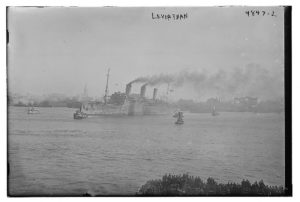
The sanctions against Germany as meted out by the Treaty of Versailles were fairly heavy. Germany was required to pay staggering reparations (initially $5 billion dollars with potentially more to be negotiated later) to the victorious European victors. While it stumbled economically, it was humiliated by a military occupation of its Rhineland territory and the limitation of its army to 100,000 men. Their navy was by over two-thirds. They were forbidden from having an air force.
The humiliations continued with approximately 25,000 square miles of territory and 7 million residents stripped from the country. These areas were transferred to neighboring countries. Then there was the blockade. At the armistice in 1918, the Allied Powers continued the blockade of imports into Germany. The blockade was continued for eight more months with the intention of starving Germany into accepting any conditions written into the treaty. Initially, Germany refused to surrender its merchant fleet, knowing that if the hostilities reignited that the Allies would be seized. That winter was desperate and Germany finally conceded to the demand. It was only at this point that the Allies released 270, 000tons of food and supplies. It is estimated that over 100,000 Germans died due to the extended blockade.
Economic Desperation
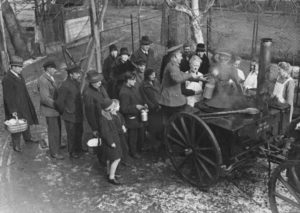
As the worldwide Great Depression pressed on after the 1929 stock crashes, countries desperately sought to escape. Some countries, like the United States, attempted to prop up the economy by cutting the unemployment rate with public works projects. Some countries tries a myriad of financial schemes to Other countries were swayed by charismatic fascist party leaders. They elected these men to the highest offices on promises of more prosperous times. One of those countries was Germany.
The bitterness and anger over the treatment of Germany and the death toll, as a result, pushed the German people to be persuaded to take back the power they viewed as being theirs. A young man named Adolf Hitler came on the scene, saying the things that many people were feeling but didn’t dare speak out loud. His platform was one of the unification of the German people and a return to the glory that Germany once enjoyed. To a people that were facing a bleak future of national debt and individual poverty, his political party held the only hope that they could see.
Germany’s Anger
Germany had been secretly working to thwart the principles of the Treaty of Versailles from the very beginning. The treaty had been met with universal anger from all of Germany. The German delegation at Versailles, which wasn’t allowed to join in the negotiations, left the peace conference. When the treaty was presented to Phillipp Scheidemann, the first democratically elected head of government for Germany, he resigned rather than sign it. In his resignation speech, he referred to the treaty as a “horrific and murderous witch’s hammer”.
A new government had to be formed, which only agreed to the terms because it knew that Germany could not repel an invasion. Forced into an impossible treaty, the Germans started working on ways to secretly strengthen their country.
Germany’s Secret Buildup
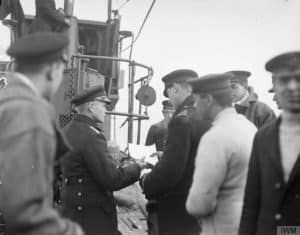
That was the Germany that Hitler eventually inherited. Because the army was so limited regarding personnel, the military reassigned soldiers to the human resources division and other “civilian” posts to hide their numbers. Additionally, civic clubs were founded by private citizens that trained men for military service during public “meetings”. Germany avoided portions of the treaty by failing to meet disarmament deadlines. Since Germany was forbidden to produce armaments on German soil, iron castings for arms were produced in secret.
In addition to the secret production, some German companies moved their production of iron castings and other weapon manufacturing to other countries. Those products would then be secretly shipped back to Germany. The German government also negotiated separate treaties with countries like the Soviet Union to produce iron castings and other manufacturing for military arms in those countries. Touted as an opportunity for trade and economic cooperation, it successfully circumvented the Treaty of Versailles. Both countries were economically struggling and the exchange was overlooked by the diplomatic corp.
Hitler’s Inheritance
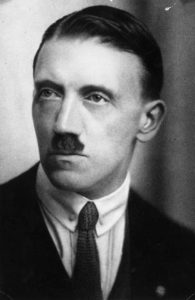
The fifteen years between the surrender in 1918 and 1933 prepared Germany for the rise of Adolf Hitler. He inherited a nation that was deeply bitter toward anyone they perceived as a part of the cause of the economic devastation of their country. This anger extended to even their fellow citizens who could be colluding with their oppressors. The country itself was a room filled with fuel vapor, waiting to be ignited. Hitler had been arrested in 1923 and sent to prison for attempting to start an insurrection in Munich. Now, some ten years later he was head of state and consolidating his power.
By 1938, he wanted to flex the muscle that he had spent five years building. He hoped to create an alliance with England that would allow him leverage for more territory. His first move was to force Austria into the Anschluss, in spite of a well-known disregard for the Nazis by the Austrians. Once Austria had been invaded, Hitler turned his sights on Czechoslovakia. After working on a program of instigating unrest in the German-majority western half of the newly-created republic, he demanded that large sections of their territory be ceded to Germany (along with about 3 million citizens). His threats to invade the country if he didn’t go his way were strengthened by the annexation of Austria. Now there was no way for France or England to intercede without invading Germany itself.
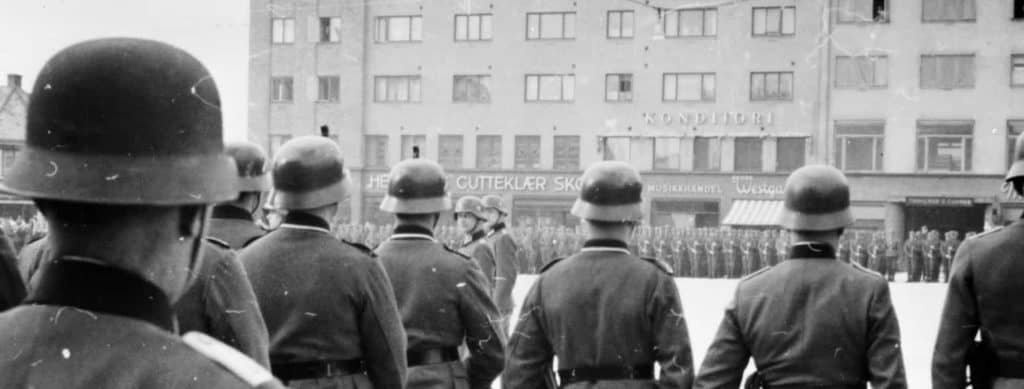 The Diplomatic Fall of Czechoslovakia
The Diplomatic Fall of Czechoslovakia
The European countries were bent under the weight of a populous who desperately wanted to avoid war. Czechoslovakia was a state created out of historically Austrian-controlled land with many minorities that made up its population. Chamberlain and the other European leaders conceded to allowing Germany to absorb the Sudetenland and other areas that were primarily German. The Czechoslovakian government accepted the deal on September 25, 1938, with hopes to settle political unrest and appease Hitler. Knowing that there were other countries that would scramble to get disputed territories for themselves, Hitler pressed the issue. The next day Hitler retracted his deal and demanded that the territorial claims of the Poles and Hungarians be acknowledged.
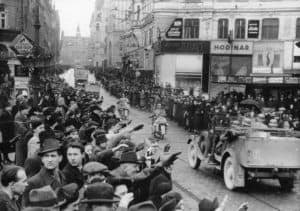
After a tense few weeks of terroristic coercion and diplomatic manipulation, France and Great Britain agreed to allow Germany to annex the Sudetenland and for the Hungarians and Poles to annex areas of strategic importance to them. It was only the beginning of Germany’s dismantling of a country that had only been established by the League of Nations twenty years before.
The Iron Castings of a New War
What happened next was the dissolution of Czechoslovakia in the hope of peace. The backstory to its downfall is more complex than people realize. It wasn’t just the land that Hitler desired. The iron foundries of the conglomerate nation were of special interest to Germany. The nation used its iron castings to become the chief producer of armaments in Europe. Ironically, however, it did not have the military strength to resist Germany. Any attempt to fight back would expose its population to a brutal war of attrition with no hope of outside intervention. The allure of this military jewel was driving Hitler to obsession.
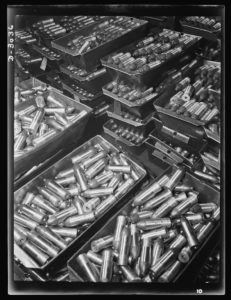
In March of 1939, Germany invaded the western portion of Czechoslovakia to form a new protectorate nation (Protectorate of Bohemia and Moravia). Meanwhile, they instigated the breakaway of the eastern part of that nation. Using aggressive manipulation and false information, it encouraged the newly independent state of Slovakia to become a puppet of Nazi Germany. The iron foundries and natural resources were now at Hitler’s disposal. Germany then used the flotsam of what was once Czechoslovakia to arm its military and launch an attack on Poland in September of the same year, starting World War II.
Descent Into War
As the world descended into war once more, the iron castings of the world’s foundries spun into full production. Armaments, automobiles, planes, and warships were built at breakneck speed. American foundries stepped up to help protect the nation during the inevitable war.
Thank you for reading this installment of our Short History of the American Foundry. We hope that you have enjoyed it and that it has been informative.
Dedication to Quality
At Willman, we pride ourselves on supporting our customers and our nation. Our products are the best in the industry, because of the quality of our employees and our dedication to continuous improvement. Contact us today and find out how we can improve the quality of your manufacturing with the right product at the right time!
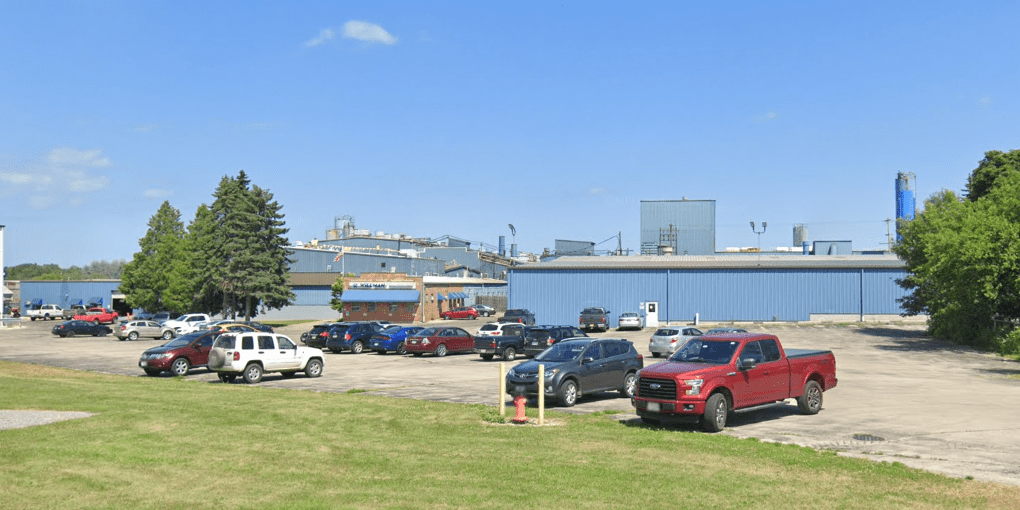
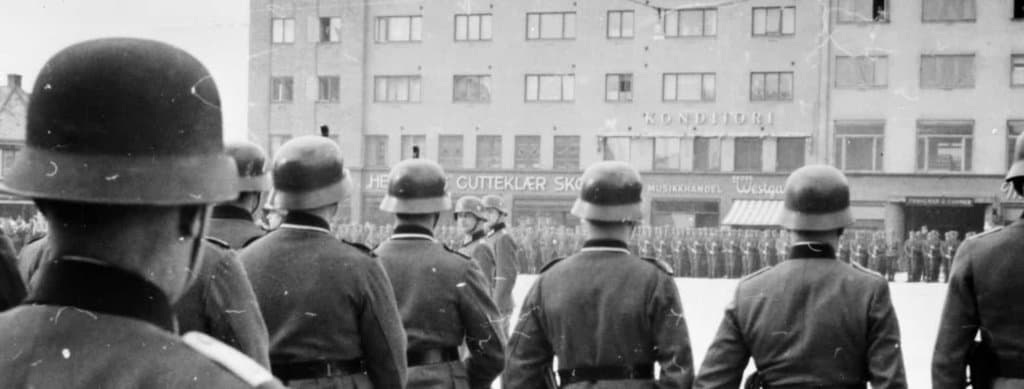
 That was the Germany that Hitler eventually inherited. Because the army was so limited regarding personnel, the military reassigned soldiers to the human resources division and other “civilian” posts to hide their numbers. Additionally, civic clubs were founded by private citizens that trained men for military service during public “meetings”. Germany avoided portions of the treaty by failing to meet disarmament deadlines. Since Germany was forbidden to produce armaments on German soil, iron castings for arms were produced in secret.
That was the Germany that Hitler eventually inherited. Because the army was so limited regarding personnel, the military reassigned soldiers to the human resources division and other “civilian” posts to hide their numbers. Additionally, civic clubs were founded by private citizens that trained men for military service during public “meetings”. Germany avoided portions of the treaty by failing to meet disarmament deadlines. Since Germany was forbidden to produce armaments on German soil, iron castings for arms were produced in secret. The fifteen years between the surrender in 1918 and 1933 prepared Germany for the rise of Adolf Hitler. He inherited a nation that was deeply bitter toward anyone they perceived as a part of the cause of the economic devastation of their country. This anger extended to even their fellow citizens who could be colluding with their oppressors. The country itself was a room filled with fuel vapor, waiting to be ignited. Hitler had been arrested in 1923 and sent to prison for attempting to start an insurrection in Munich. Now, some ten years later he was head of state and consolidating his power.
The fifteen years between the surrender in 1918 and 1933 prepared Germany for the rise of Adolf Hitler. He inherited a nation that was deeply bitter toward anyone they perceived as a part of the cause of the economic devastation of their country. This anger extended to even their fellow citizens who could be colluding with their oppressors. The country itself was a room filled with fuel vapor, waiting to be ignited. Hitler had been arrested in 1923 and sent to prison for attempting to start an insurrection in Munich. Now, some ten years later he was head of state and consolidating his power. The Diplomatic Fall of Czechoslovakia
The Diplomatic Fall of Czechoslovakia
 In March of 1939, Germany invaded the western portion of Czechoslovakia to form a new protectorate nation (Protectorate of Bohemia and Moravia). Meanwhile, they instigated the breakaway of the eastern part of that nation. Using aggressive manipulation and false information, it encouraged the newly independent state of Slovakia to become a puppet of Nazi Germany. The iron foundries and natural resources were now at Hitler’s disposal. Germany then used the flotsam of what was once Czechoslovakia to arm its military and launch an attack on Poland in September of the same year, starting World War II.
In March of 1939, Germany invaded the western portion of Czechoslovakia to form a new protectorate nation (Protectorate of Bohemia and Moravia). Meanwhile, they instigated the breakaway of the eastern part of that nation. Using aggressive manipulation and false information, it encouraged the newly independent state of Slovakia to become a puppet of Nazi Germany. The iron foundries and natural resources were now at Hitler’s disposal. Germany then used the flotsam of what was once Czechoslovakia to arm its military and launch an attack on Poland in September of the same year, starting World War II.



